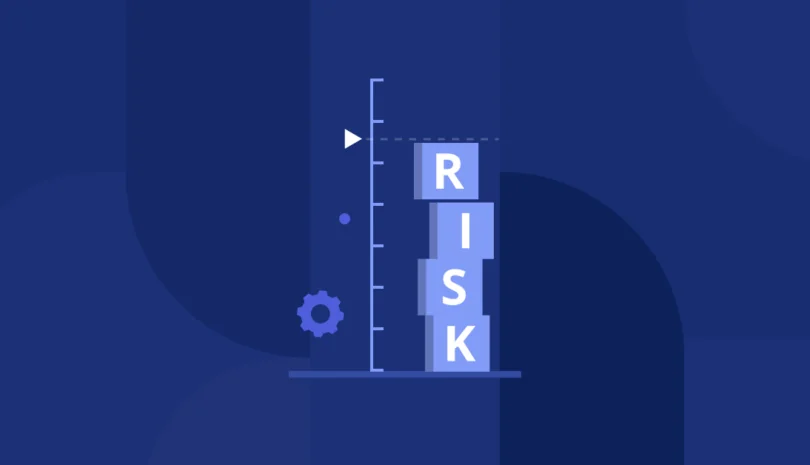Vendor evaluations are a critical part of managing data security and regulatory compliance, especially in sectors like higher education, where institutions handle large volumes of sensitive information. From student records and research data to financial systems and cloud infrastructure, third-party services introduce significant risk if not properly assessed.
As the cybersecurity threat landscape continues to grow, higher education institutions face increasing pressure to implement consistent and scalable vendor risk management processes. The Higher Education Community Vendor Assessment Tool (HECVAT) was developed to meet this need. Created by EDUCAUSE and the Higher Education Information Security Council (HEISC), HECVAT provides a standardized framework for evaluating the security and privacy controls of third-party vendors, particularly those offering cloud-based solutions.
HECVAT helps institutions reduce risk by aligning vendor assessments with security best practices and compliance obligations. It supports faster, more informed procurement decisions while improving accountability across departments. As the EDUCAUSE 2024 Horizon Report highlights, information security remains a top priority for higher education leaders, making tools like HECVAT an essential part of modern vendor assessment strategies
What is HECVAT?
The Higher Education Community Vendor Assessment Tool (HECVAT) is a standardized questionnaire designed to help colleges and universities assess the cybersecurity and data protection practices of third-party vendors. It was developed by EDUCAUSE, in collaboration with the Higher Education Information Security Council (HEISC), to streamline how institutions evaluate cloud-based services and technology providers.
HECVAT’s primary goal is to make third-party risk assessments more consistent and repeatable. Instead of building custom security questionnaires for each vendor, institutions can use HECVAT to quickly evaluate whether a product or service meets their internal security and compliance requirements. This is especially important for cloud services that handle sensitive data, such as student records, financial transactions, or research information.
There are several versions of the tool, each designed for a different level of risk or technical complexity. HECVAT Lite is a shorter version for low-risk services. The Full version provides a more comprehensive assessment for high-risk or enterprise solutions. HECVAT On-Premise focuses on software and systems hosted on an institution’s infrastructure.
HECVAT is widely used by higher education institutions, IT and security teams, and vendors that serve the academic sector. It promotes transparency and fosters trust between institutions and their technology partners.
Why HECVAT Matters in Vendor Risk Management
HECVAT plays a central role in strengthening third-party risk management by offering a standardized, repeatable way to evaluate vendor security practices. Rather than relying on ad hoc questionnaires or inconsistent documentation, institutions can use HECVAT to apply the same high standards across all vendors, reducing risk while improving efficiency.
By integrating HECVAT into the early stages of procurement, IT and security teams can identify potential security gaps before a contract is signed. This proactive approach minimizes the risk of data breaches, noncompliance, and operational disruption later in the vendor lifecycle.
HECVAT is also designed to align with widely accepted security and privacy frameworks, including NIST, ISO/IEC 27001, FERPA, and GLBA. That alignment makes it easier for institutions to ensure regulatory compliance while reinforcing internal policies and controls.
Ultimately, HECVAT helps build a stronger foundation for vendor risk management. It supports better decision-making, clearer communication with stakeholders, and more consistent documentation, essential elements for any organization navigating complex regulatory environments or handling sensitive data.
Benefits of Including HECVAT in a Vendor Assessment Process
Incorporating HECVAT into your vendor assessment process offers clear operational and strategic advantages. One of the most immediate benefits is time savings. With a standardized set of questions, institutions avoid reinventing the wheel for each vendor evaluation, accelerating procurement timelines without sacrificing due diligence.
HECVAT also simplifies vendor comparisons. Because each vendor responds to the same criteria, security and procurement teams can more easily benchmark risk levels, spot inconsistencies, and prioritize follow-ups. This consistency helps reduce confusion and ensures that all vendors are evaluated on an equal footing.
Beyond efficiency, HECVAT improves cross-functional collaboration. Security, legal, and procurement teams can align more effectively when working from a shared assessment framework. This reduces back-and-forth and streamlines the review process.
Lastly, HECVAT promotes transparency and accountability in vendor relationships. Vendors are asked to clearly document their security controls and compliance posture, which helps institutions make more informed decisions, and hold vendors accountable to agreed-upon standards throughout the contract lifecycle.
How to Implement HECVAT in Your Vendor Assessment Process
Integrating HECVAT into your vendor assessment workflow starts with selecting the right version of the tool. For vendors offering low-risk services, HECVAT Lite may be sufficient. For higher-risk engagements, such as those involving sensitive data or enterprise-level integrations, the Full or On-Premise versions provide more detailed insight into a vendor’s security posture.
Once the appropriate version is chosen, request that the vendor complete the HECVAT questionnaire early in the procurement process. Ideally, this occurs before any contract negotiations begin, allowing teams to review and address potential issues up front.
After receiving the completed HECVAT, security and IT teams should evaluate the responses against internal standards and regulatory requirements. Look for gaps in controls, unclear answers, or areas where additional clarification is needed.
Finally, incorporate the assessment findings into your procurement and contracting decisions. Responses can be used to inform risk mitigation strategies, influence contract terms, or determine whether additional monitoring is required post-contract. When applied consistently, HECVAT becomes a valuable tool not just for assessment, but for driving better, safer vendor relationships from the start.
Overcoming Common Challenges with HECVAT Vendor Assessment
While HECVAT provides a clear framework for vendor risk assessment, implementing it isn’t always straightforward. One of the most common challenges is working with vendors who are unfamiliar with the tool. In these cases, it’s important to provide context, explaining that HECVAT is a higher education standard designed to streamline security reviews and align with regulatory expectations.
Another frequent issue is receiving incomplete or vague responses. This can delay procurement and introduce risk if key details are missing. To address this, establish clear expectations when requesting the HECVAT, and follow up promptly when answers require clarification or supporting documentation.
It’s also essential to strike the right balance between thoroughness and efficiency. While the Full version of HECVAT offers deep insight, it may not be practical for every vendor relationship, especially those involving minimal access to sensitive data. Choosing the appropriate version helps maintain assessment quality without overburdening vendors.
To make the process smoother, platforms like Panorays can help automate HECVAT distribution, track response quality, and flag high-risk answers, so your team can focus on what matters most: building secure, compliant vendor partnerships.
HECVAT Beyond Higher Education
Although HECVAT was originally developed for colleges and universities, its structured approach to vendor risk assessment is gaining traction beyond academia. Organizations in healthcare, nonprofit, and public sectors are increasingly adopting HECVAT to evaluate the security posture of cloud vendors, particularly those handling regulated or sensitive data.
The appeal lies in its clarity and consistency. HECVAT offers a ready-made framework aligned with established security standards, making it an attractive option for institutions seeking to formalize or scale their third-party risk processes. As vendor ecosystems grow more complex, there’s a growing opportunity for cross-sector adoption that promotes shared expectations and reduces assessment fatigue for vendors.
For technology providers, proactively completing HECVAT, even when not explicitly requested, can be a strategic advantage. A well-prepared response signals maturity, builds trust, and shortens sales cycles by reducing delays during security reviews. It also positions vendors to work more efficiently with higher education clients and beyond, as more industries move toward standardized risk assessments.
HECVAT’s structure and flexibility make it well-suited for broader use, and its growing adoption reflects the increasing demand for transparency and security across all sectors.
Elevating Your Vendor Risk Program with HECVAT
HECVAT brings clarity, consistency, and accountability to vendor assessments, three qualities that are increasingly important as organizations rely more on third-party services to support critical operations. By standardizing how vendors are evaluated, HECVAT strengthens due diligence, helps identify risks earlier, and ensures alignment with security and compliance frameworks from the start.
Whether you’re managing a complex procurement process or onboarding a single cloud service provider, incorporating HECVAT can improve both speed and quality. It facilitates cross-team collaboration, supports better documentation, and creates a shared language between institutions and vendors when it comes to cybersecurity.
If you’re looking to improve your third-party risk program, HECVAT is a practical place to start. Consider piloting it during your next vendor review cycle to see the benefits firsthand.
To streamline HECVAT reviews and broader third-party risk assessments, Panorays makes it easy to automate workflows, evaluate responses at scale, and ensure continuous monitoring. Book a personalized demo here to see how Panorays can support your vendor risk strategy.
HECVAT Vendor Assessment FAQs
-
HECVAT provides a standardized approach to evaluating vendor security practices, making the assessment process more efficient, consistent, and aligned with compliance requirements. It helps identify risks early, supports better procurement decisions, and facilitates collaboration across legal, IT, and security teams.
-
There are three main types of HECVAT questionnaires:
- HECVAT Lite: A shorter version designed for low-risk services.
- HECVAT Full: A comprehensive questionnaire for vendors handling sensitive data or mission-critical services.
- HECVAT On-Premise: Tailored for products hosted within the institution’s environment rather than the cloud.
-
Yes. One of HECVAT’s key advantages is reusability. Once completed, vendors can share the same validated questionnaire with multiple institutions, reducing redundancy and speeding up review cycles.
-
HECVAT can be a core part of your third-party risk management (TPRM) framework. It offers structured due diligence during vendor onboarding and integrates well with ongoing risk monitoring processes. Tools like Panorays can help manage HECVAT responses at scale and automate reviews as part of a comprehensive TPRM program.



